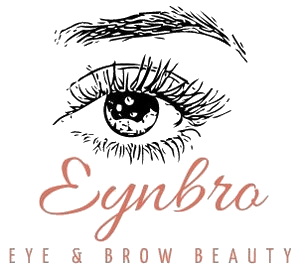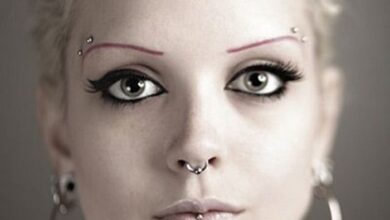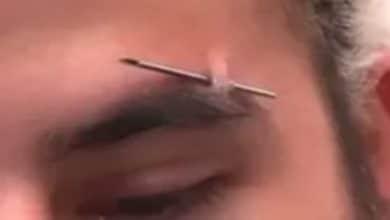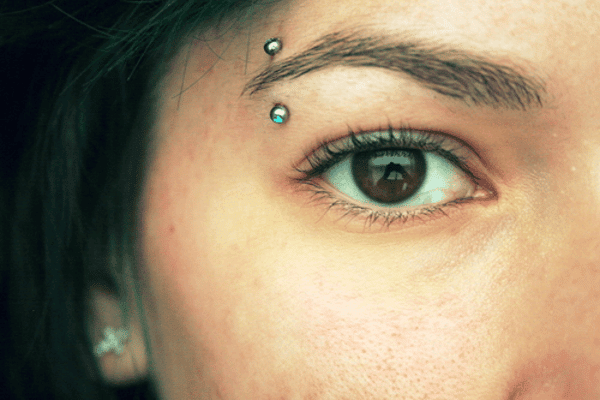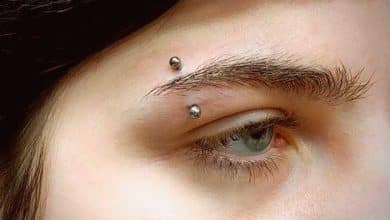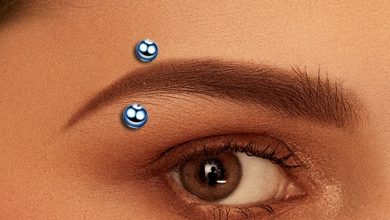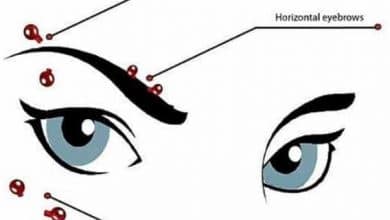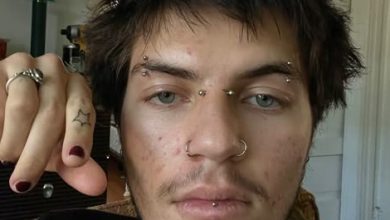Effective Strategies to Minimize Scarring from Anti Eyebrow Piercings
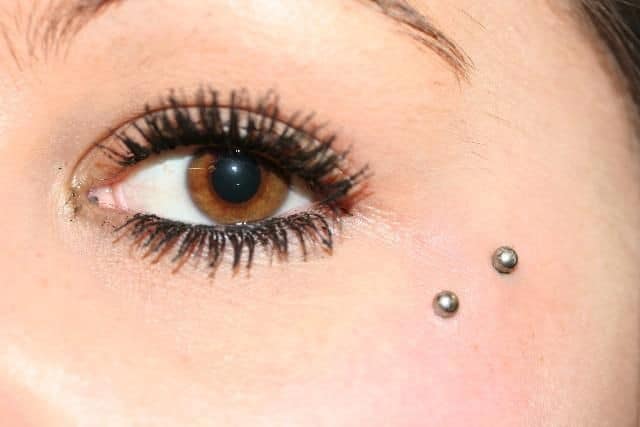
Are you considering getting an anti eyebrow piercing but concerned about the potential scarring? Scarring is a common worry when it comes to body piercings, but with the right knowledge and strategies, you can minimize the risk and enjoy your piercing to the fullest. In this comprehensive guide, we will delve into effective strategies to minimize scarring from anti eyebrow piercings. From proper aftercare practices to promoting healing and reducing complications, we will provide you with the essential information you need for a successful piercing experience. So, let’s explore the world of anti eyebrow piercings and discover how you can keep scarring at bay.
Key Takeaways
- Proper aftercare is crucial for minimizing scarring from anti eyebrow piercings. Cleanse the area gently, avoid touching or rotating the jewelry, and protect the piercing from trauma.
- Promote healing and reduce scarring by following a balanced diet, avoiding smoking and excessive alcohol consumption, and maintaining good hygiene.
- Opt for high-quality jewelry and consult a professional piercer for personalized advice and guidance.
- Be patient during the healing process, monitor for signs of complications, and consider scar reduction treatments if necessary.
Anti eyebrow piercings have gained popularity as a trendy and unique way to enhance facial aesthetics. However, one concern that often arises with any type of piercing is the potential for scarring. Scarring can occur due to various factors such as improper aftercare, infection, or individual healing processes. In this article, we will explore effective strategies to minimize scarring from anti eyebrow piercings, ensuring a more satisfactory piercing experience.
Understanding Anti Eyebrow Piercings
Anti eyebrow piercings, also known as teardrop or surface piercings, involve the placement of jewelry just below the eyebrow, on the upper cheek area. These piercings are typically done horizontally and can be adorned with various jewelry options, including studs, rings, or barbells.
Importance of Proper Aftercare
Proper aftercare plays a crucial role in minimizing scarring from anti eyebrow piercings. Following these guidelines can significantly improve healing and reduce the risk of scarring:
Cleanse the area gently: Use a saline solution or a piercing aftercare solution recommended by a professional piercer to clean the pierced area. Avoid harsh soaps or alcohol-based products that can irritate the skin.
Avoid swimming and soaking: Stay away from swimming pools, hot tubs, and baths during the initial healing period, as water can introduce bacteria and prolong the healing process.
Avoid makeup and cosmetics: Avoid applying makeup or cosmetics directly on or around the piercing area to prevent irritation or infection. If necessary, use hypoallergenic and non-comedogenic products.
Protect from trauma: Be mindful of activities that may cause trauma to the piercing, such as sports or rough physical contact. Consider wearing protective gear or covering the piercing to prevent accidental hits.
Promoting Healing and Reducing Scarring
In addition to proper aftercare, certain strategies can help promote healing and minimize scarring:
Follow a balanced diet: Consuming a balanced diet rich in vitamins, minerals, and antioxidants can support the healing process. Focus on foods that are high in vitamin C, zinc, and omega-3 fatty acids, such as citrus fruits, leafy greens, nuts, and fatty fish.
Avoid smoking and excessive alcohol consumption: Smoking and excessive alcohol consumption can hinder the body’s natural healing processes. Quitting smoking and limiting alcohol intake can promote faster healing and reduce the risk of scarring.
Maintain good hygiene: Keep the piercing area clean and dry to prevent infections. Avoid using harsh cleansers or touching the piercing with dirty hands. If any signs of infection, such as redness, swelling, or discharge, occur, seek professional medical advice.
Opt for high-quality jewelry: Choosing high-quality jewelry made from materials such as titanium, surgical steel, or niobium can reduce the risk of irritation or allergic reactions. Avoid low-quality or nickel-based jewelry that may cause skin sensitivity and scarring.
Consult a professional piercer: If you’re considering an anti eyebrow piercing, consult an experienced professional piercer who follows proper sterilization techniques. They can provide guidance on suitable jewelry, aftercare routines, and offer personalized advice for minimizing scarring.
Additional Tips and Precautions
Here are some additional tips and precautions to keep in mind:
Avoid changing jewelry prematurely: It’s essential to allow the piercing to fully heal before changing jewelry. Prematurely changing the jewelry can disrupt the healing process and increase the risk of scarring. Consult with your piercer to determine when it’s safe to change the jewelry.
Manage swelling and discomfort: Swelling and discomfort are common during the initial healing period. Applying a cold compress or taking over-the-counter anti-inflammatory medications can help reduce swelling and alleviate discomfort. However, always consult with a healthcare professional before taking any medication.
Avoid direct sunlight and tanning beds: Exposing the piercing to direct sunlight or tanning beds can cause discoloration and irritation. Protect the piercing by using sunscreen or covering it with a clean bandage when exposed to sunlight.
Be patient: Healing time for anti eyebrow piercings can vary from person to person. It’s essential to be patient and allow your body enough time to heal. Rushing the healing process can lead to complications and increased scarring.
Monitor for signs of complications: Keep a close eye on the piercing for any signs of infection or other complications. If you notice excessive redness, persistent pain, or abnormal discharge, seek professional medical advice promptly.
Consider scar reduction treatments: In some cases, despite following proper aftercare and precautions, scarring may still occur. If scarring becomes a concern, consult with a dermatologist or medical professional experienced in scar reduction treatments. They can recommend options such as laser therapy, silicone gel sheets, or steroid injections to minimize the appearance of scars.
While scarring is a potential risk with any piercing, following effective strategies and proper aftercare can significantly minimize scarring from anti eyebrow piercings. Remember to prioritize hygiene, seek professional guidance, and be patient during the healing process. By taking these precautions and adopting healthy practices, you can enjoy your anti eyebrow piercing while minimizing the chances of scarring.
FAQ
1. How long does it take for an anti eyebrow piercing to heal?
The healing time for an anti eyebrow piercing can vary from person to person. On average, it takes approximately 6 to 8 weeks for the initial healing to occur. However, it’s important to note that complete healing may take several months or even up to a year. Factors such as individual healing capabilities, aftercare practices, and overall health can influence the healing timeline. It’s crucial to be patient and allow your body enough time to heal before considering any jewelry changes or modifications to minimize the risk of scarring.
2. Can I change the jewelry in my anti eyebrow piercing before it’s fully healed?
Changing the jewelry in your anti eyebrow piercing before it’s fully healed is not recommended. Prematurely changing the jewelry can disrupt the healing process and increase the risk of complications, including scarring. It’s crucial to follow the advice of your professional piercer and wait until the piercing has fully healed before considering any jewelry changes. They will assess the healing progress and advise you on the appropriate time to switch to different jewelry styles or sizes.
3. What should I do if my anti eyebrow piercing gets infected?
If you suspect that your anti eyebrow piercing is infected, it’s important to take immediate action. Signs of infection may include excessive redness, swelling, persistent pain, warmth around the piercing, and the presence of pus or discharge. First, clean the area with a saline solution or a piercing aftercare solution to remove any debris or crust. Avoid touching the piercing with dirty hands. If the infection persists or worsens, it’s recommended to seek professional medical advice. A healthcare professional can assess the situation, prescribe antibiotics if necessary, and provide further guidance on how to treat the infection and minimize scarring.
4. Can I swim with an anti eyebrow piercing?
It’s best to avoid swimming, particularly in pools, hot tubs, and natural bodies of water, during the initial healing period of your anti eyebrow piercing. Water from these sources may contain bacteria or other contaminants that can increase the risk of infection and delay the healing process. It’s important to prioritize the health of your piercing and wait until it has fully healed before exposing it to swimming activities. If swimming is unavoidable, consider using a waterproof bandage or covering the piercing with a clean, non-stick dressing to protect it from direct contact with water.
5. How can I minimize pain and swelling after getting an anti eyebrow piercing?
Experiencing some pain and swelling is normal after getting an anti eyebrow piercing. To minimize discomfort, you can apply a cold compress to the area for short intervals. The cold temperature can help reduce swelling and provide temporary relief. Additionally, taking over-the-counter anti-inflammatory medications, such as ibuprofen, as directed by a healthcare professional, can help manage pain and reduce swelling. However, it’s important to consult with a medical professional before taking any medication to ensure it is safe and suitable for you.
6. Will an anti eyebrow piercing leave a permanent scar?
While scarring is a potential risk with any piercing, there is no guarantee that an anti eyebrow piercing will leave a permanent scar. The likelihood of scarring can be influenced by several factors, including individual healing processes, aftercare practices, and any complications that may arise during the healing period. By following proper aftercare instructions, maintaining good hygiene, and seeking professional advice when needed, you can minimize the risk of scarring. However, it’s important to keep in mind that everyone’s body is different, and scarring can vary from person to person.
7. Can I wear makeup on or around my anti eyebrow piercing?
It’s generally recommended to avoid applying makeup or cosmetics directly on or around the anti eyebrow piercing during the initial healing period. Makeup products can introduce bacteria, irritate the piercing, and increase the risk of infection. It’s best to wait until the piercing has fully healed before considering the use of makeup. If you must use makeup, make sure to choose hypoallergenic and non-comedogenic products that are less likely to cause irritation. Apply the makeup carefully, avoiding direct contact with the piercing, and clean the area gently afterward with a saline solution or piercing aftercare solution to remove any residue.
8. Can I participate in sports or physical activities with an anti eyebrow piercing?
Engaging in sports or physical activities with an anti eyebrow piercing should be approached with caution. Physical contact or trauma to the piercing area can cause complications, such as excessive swelling, bleeding, or migration of the jewelry, which may increase the risk of scarring. If you participate in sports or activities that pose a risk of direct impact or trauma to the piercing, it’s advisable to protect the area by wearing suitable protective gear, such as a headband or bandage. Discuss with your piercer and consider their recommendations based on your specific circumstances to minimize the chances of scarring.
9. Can I use sea salt to clean my anti eyebrow piercing?
While sea salt soaks have been commonly recommended for cleaning piercings, it’s best to avoid using sea salt directly on your anti eyebrow piercing. Sea salt can vary in composition and may contain impurities that can irritate the piercing or disrupt the healing process. Instead, it’s advisable to use a saline solution specifically formulated for piercings or a piercing aftercare solution recommended by a professional piercer. These solutions are sterile and provide the appropriate balance of saline to cleanse the piercing gently without causing irritation.
10. Are there any specific risks or considerations for individuals with sensitive skin?
Individuals with sensitive skin may have a higher risk of developing complications or scarring from an anti eyebrow piercing. It’s crucial to take extra care and follow proper aftercare instructions diligently. Choosing high-quality jewelry made from materials such as titanium, surgical steel, or niobium can help reduce the risk of skin sensitivity or allergic reactions. If you have a history of skin allergies or sensitivities, it’s advisable to consult with a professional piercer or dermatologist before getting an anti eyebrow piercing. They can provide personalized recommendations and guidance to minimize the risk of scarring and ensure a safer piercing experience.
Conclusion
Getting an anti eyebrow piercing can be a unique and stylish way to express yourself. While scarring is a potential concern, implementing effective strategies can significantly minimize its occurrence. By prioritizing proper aftercare, promoting healing through a balanced diet and healthy lifestyle, and seeking professional guidance when needed, you can enhance your chances of a successful piercing experience with minimal scarring. Remember to be patient, listen to your body, and consult with a professional piercer or healthcare provider for personalized advice. With the right approach and care, you can enjoy your anti eyebrow piercing while keeping scarring at bay.
